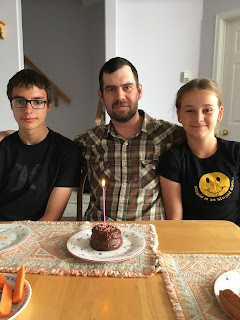 |
| My aunt was a professional photographer |
I have been cutting Terry's hair all our married life. I started doing this for two reasons: 1. My mum always cut my dad's hair, sparse as it was, with an old-fashioned pair of hand clippers, and I was just following suit. 2. When we graduated from university I had cut out a newspaper article about a young couple and the ways they saved money. It was minimalism at its finest, and suited my mindset as well. So we bought our first home barber kit, and the rest is history.
I don't think we had started home barbering during our first three years of teaching, though, as you can see in the picture below.
 |
| Fort Nelson days |
Here is the story...
We were in India, at our host's large house. The barber was supposed to come to the house at 5:30 am. Terry and I took up our positions on the comfortable couches right after the early morning prayer meeting, mentioned in a previous post. I was taking a break from hair-cutting for a change. I'm not an expert, just learned skills as I went along. I was hoping the barber would fix a section of Terry's hair I never seemed to get just right. A couple of the other guys joined us to wait, including the pastor, who had already had his hair cut a week previously, but took this opportunity to get another quick trim.
Minutes pass, and the barber doesn't show up. Everyone is busy on his phone, as we're sitting in the best Wifi reception area. Finally, an hour later a mild mannered man knocks on the door. "My son didn't give me the message," he said.
That's OK, we are first in line. Terry sits down with a drape around his shoulders, and the barber starts his craft. Terry can't hear us commenting on his haircut, as he has removed his hearing-aids. The barber is just using his scissors, and seems to be doing a good job.
Suddenly I lean into Terry's ear and excitedly report, "It's Livi's birthday today!" Only I forget it isn't her birthday in Canada yet, as in India we are a full twelve hours ahead.
Terry grunts in reply. Now the barber takes out a very sharp razor. He proudly explains that he uses a new blade for every customer. Soon, Terry's haircut is complete, a wonderful job. Now I have a guideline to go by when I next cut his hair. Total cost? 100 rupees, about two dollars.
It was worth it to the barber; he had several haircuts to do in one early morning by coming to the house, he earned more than he usually does in one day.
 |
| Using the straight razor |





















































